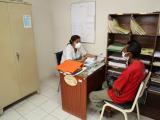A survey of tuberculosis (TB) drug controllers and managers at California TB programs reveals that 64% of those that reported at least one TB case from 2016 to 2021 experienced a delay in availability or lack of supply of any oral first-line drug to treat the disease in the past year, often leading to delayed initiations or pauses in therapy.
The study, headed by the California Department of Health and the California TB Controllers Association, involved a web-based survey fielded in 2022 to all 61 California TB programs, 54 of which responded. About 20% of TB cases are reported from California, where TB programs are decentralized.
The results were published today in Morbidity and Mortality Weekly Report.
The study authors noted that TB drug shortages have been a concern in the United States for years and as recently as May 2023. "Contributors to these disruptions include loss of manufacturers to the U.S. market, inefficient supply chains, and lack of active ingredients available for import," they wrote.
The two most commonly used first-line TB medications are isoniazid and rifampin, and rifapentine has been incorporated into shorter first-line regimens. All three have been subject to shortage once since March 2020.
6% reported negative patient outcomes
Of the 50 programs that reported one or more TB cases from 2016 to 2021, 64% experienced a delay in availability or a lack of availability of any oral first-line TB drug in the previous year. The supply interruptions led to delayed initiations or pauses in treatment of TB disease or latent TB infection (LTBI; 37% for all programs and 55% for high–case-count programs).
Securing a more stable TB drug supply might avert some of the unfavorable clinical and programmatic effects of TB treatment interruptions.
The shortages also led to permanent changes in the choice of drugs and length of treatment (33% for all TB programs and 65% for high–case-count programs). As a result, 6% of all programs reported negative patient outcomes, two programs reported at least one case of prolonged treatment, and a third reported at least one adverse drug event.
The average priority level assigned to securing a continuous supply of TB drugs was 8.6 on a 10-point scale among all programs and 9.4 among high–case-count programs.
"Ensuring drug availability is a high priority for TB programs," the researchers wrote. "To meet the standards of practice for TB disease and LTBI, and to continue progress toward TB elimination, California has established a centralized buffer supply of several TB drugs."
"Securing a more stable TB drug supply might avert some of the unfavorable clinical and programmatic effects of TB treatment interruptions," they concluded.






















